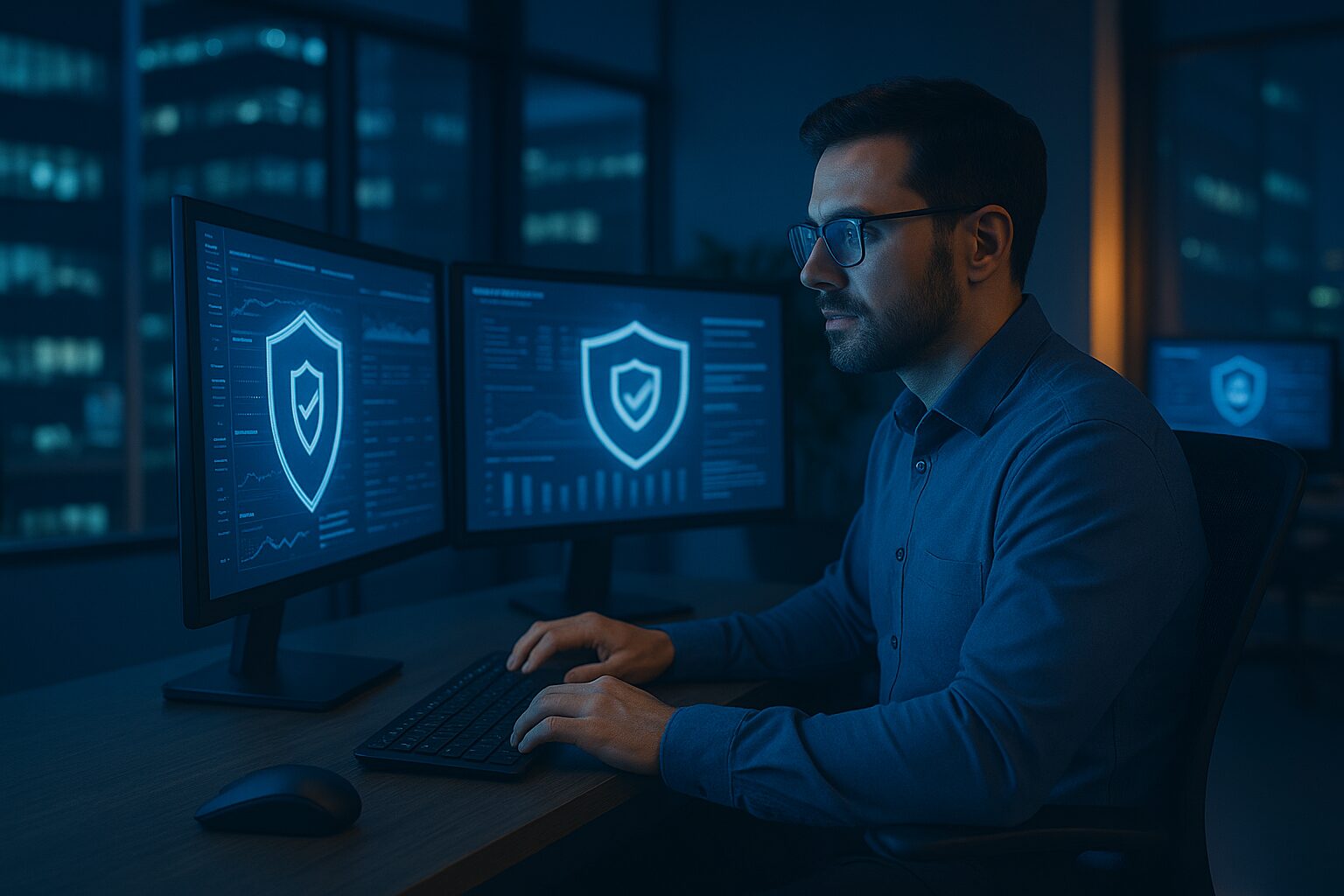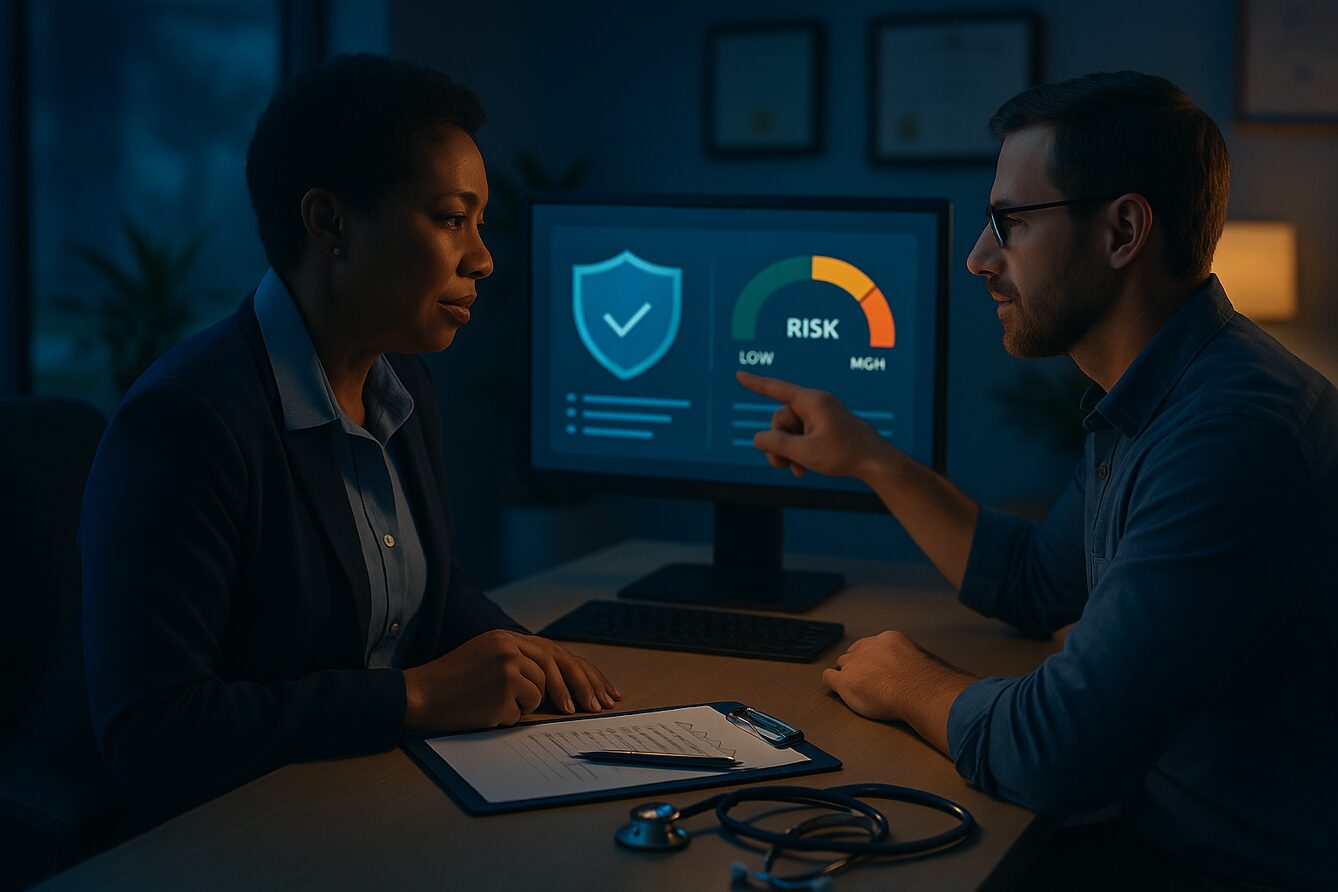Senior living communities aren’t just healthcare providers—they’re data hubs filled with sensitive resident information, financial records, and operational details that cybercriminals find extremely valuable. As the industry continues to adopt digital tools for resident care, communication, and operations, cyber threats have become a serious risk that can’t be ignored.
Unlike large hospital systems with dedicated IT teams, many senior living facilities operate with minimal cybersecurity infrastructure, making them prime targets for cyberattacks. A single ransomware attack or data breach can disrupt operations, jeopardize resident privacy, and cause irreparable reputational damage.
To protect both residents and business continuity, senior living communities must take a proactive approach to cyber risk assessment and mitigation. Here’s what every facility needs to know.
The Cyber Threat Landscape for Senior Living Communities
Cybercriminals are constantly evolving their tactics, and senior living communities remain a high-risk target due to the volume of personal and financial data they store. Some of the most common threats include:
1. Zero-Day Threats
Attackers exploit previously unknown software vulnerabilities before security patches can be developed. Without continuous monitoring and timely updates, facilities remain at risk.
2. Phishing Attacks
Hackers use deceptive emails and messages to trick employees or residents into providing login credentials, financial details, or other sensitive information.
3. Ransomware Attacks
Malicious software encrypts critical data, locking out facilities from medical records, scheduling systems, and payroll platforms until a ransom is paid.
4. Insider Threats
Cybersecurity risks don’t always come from external hackers—employees, contractors, or vendors with access to systems can intentionally or unintentionally compromise security.
5. Social Engineering
Cybercriminals manipulate employees or residents into revealing sensitive data by pretending to be trusted contacts—whether a bank, IT support, or even a family member.
These threats aren’t hypothetical. Healthcare remains one of the most targeted industries for cybercrime, and senior living centers must assume that attacks are a matter of when—not if.
Don’t Wait for a Breach
The Cost of a Cyberattack in Senior Living
A successful cyberattack on a senior living community can have devastating consequences:
- Resident Data Breaches – Personal medical histories, financial records, and Social Security numbers can be stolen and sold on the dark web.
- Financial Losses – Hacked bank accounts and fraudulent transactions can drain facility resources and impact resident care.
- Operational Disruptions – Ransomware attacks lock out facilities from essential systems, delaying medical services and critical daily operations.
- Reputation Damage – A publicized cyber breach erodes trust among residents, families, and regulatory agencies, leading to potential revenue loss.
With healthcare compliance laws tightening and cybercriminals becoming more sophisticated, senior living facilities must take a proactive stance in securing their IT environments.
Step 1: Conducting a Cybersecurity Risk Assessment
Before a facility can strengthen its cybersecurity defenses, it needs a clear picture of its vulnerabilities. A structured cyber risk assessment helps facilities understand where they are most at risk.
Key Steps in Cyber Risk Assessment:
- Identify Critical Assets – What resident data, financial information, and IT infrastructure must be protected?
- Evaluate Threats & Weaknesses – Assess where security gaps exist, from aging IT systems to untrained staff.
- Prioritize Risks – Determine which vulnerabilities are most likely to be exploited and what the impact would be.
- Plan Risk Mitigation Strategies – Develop a structured security framework to reduce exposure and strengthen cyber resilience.
A thorough cyber risk assessment is the foundation for a strong security strategy.
Step 2: Establishing a Risk Management Framework
Once vulnerabilities are identified, senior living facilities need a cybersecurity roadmap that outlines how they will detect, prevent, and respond to cyber threats.
A Strong Cyber Risk Management Framework Includes:
Security Policies & Procedures – Clear guidelines for data handling, access permissions, and device usage.
Access Control Measures – Restrict data access only to authorized personnel and use multi-factor authentication (MFA) to prevent unauthorized logins.
Continuous Monitoring & Risk Assessments – Ongoing threat detection, network monitoring, and software updates to stay ahead of emerging risks.
Incident Response & Disaster Recovery Plan – A defined action plan to contain, mitigate, and recover from cyberattacks.
Cybersecurity isn’t a one-and-done initiative. It requires ongoing vigilance and adaptation to new threats.
Step 3: Building a Cybersecurity Culture in Senior Living Communities
Even with the best security measures in place, human error remains a major cybersecurity risk. Educating staff and residents is critical to maintaining a secure environment.
Cybersecurity Best Practices for Staff & Residents:
- Staff Training: Recognizing phishing emails, safe password management, and secure handling of sensitive resident data.
- Resident Awareness: Teaching seniors how to identify scams, use strong passwords, and protect their personal devices.
- Regular Security Drills: Simulating cyberattack scenarios to test response times and improve preparedness.
When cybersecurity is woven into the culture of a senior living facility, it becomes a shared responsibility, not just an IT issue.
Protect What Matters Most
Step 4: Implementing Strong Cybersecurity Measures
Proactive cybersecurity strategies prevent attacks before they happen. Every senior living facility should prioritize these key security measures:
Strengthening Network & Infrastructure Security
A strong cybersecurity foundation starts with fortifying network defenses. Firewalls and endpoint protection should be actively monitoring for suspicious activity, identifying potential threats before they can cause harm. Implementing network segmentation adds another layer of security by isolating critical data from general access, reducing the risk of widespread breaches and ensuring that sensitive resident information remains protected.
Securing Endpoints & Remote Access
Devices used by staff and residents can serve as entry points for cyber threats, making endpoint security a top priority. Installing anti-malware and encryption software on all devices prevents unauthorized access and protects personal and financial data. Additionally, restricting remote access for third-party vendors minimizes external risks, ensuring that only authorized personnel can interact with the facility’s systems and data.
Implementing a Data Backup & Recovery Plan
No cybersecurity strategy is complete without a data backup and disaster recovery plan. Regular backups should be stored in secure, off-site cloud environments to safeguard against data loss in the event of an attack or system failure. Disaster recovery strategies must be tested frequently to ensure quick restoration, minimizing downtime and preventing disruptions to patient care and facility operations.
Creating a Rapid Incident Response Plan
Even with strong preventive measures in place, incidents can still occur, making a rapid response plan essential. Clearly defining roles and responsibilities ensures that staff can act swiftly in the event of a cyberattack, containing and mitigating damage. Open communication with staff, residents, and authorities is equally important, allowing for transparency, coordinated action, and trust-building in the aftermath of an incident.
Cybersecurity in senior living isn’t just about protecting data—it’s about ensuring uninterrupted care and trust.
Cybersecurity in Senior Living: A Continuous Effort
With cyber threats growing daily, senior living communities must take a proactive approach to security. A combination of regular risk assessments, strong policies, staff training, and advanced security measures is key to protecting residents and keeping operations running smoothly.
Is your senior living facility equipped to handle today’s cybersecurity challenges?
Meriplex provides tailored cybersecurity solutions to safeguard senior living communities from evolving threats.



